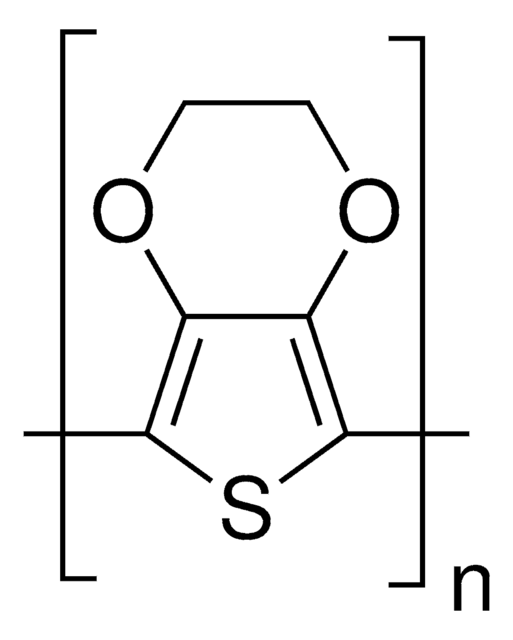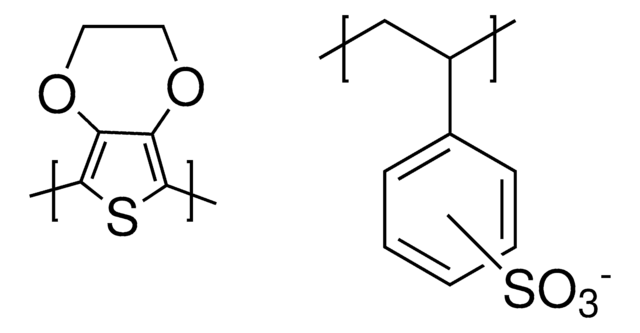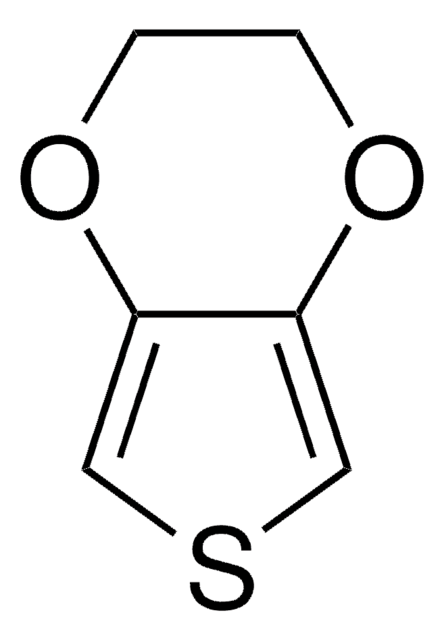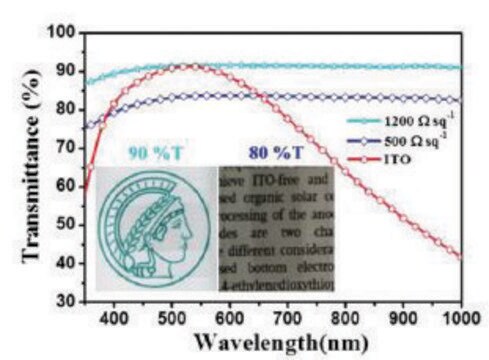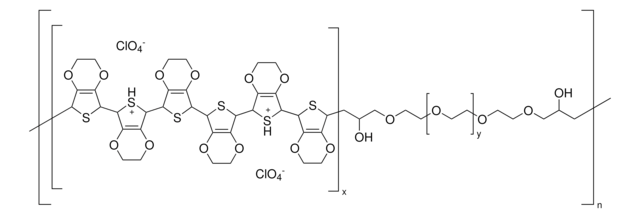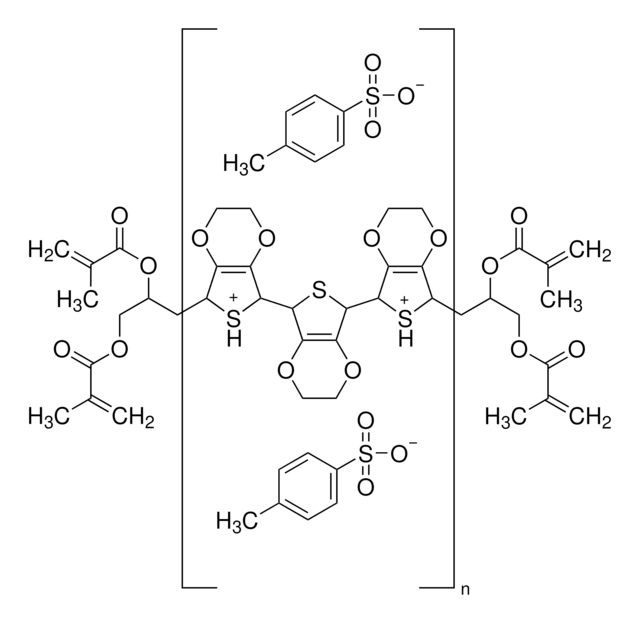739324
PEDOT:PSS
high-conductivity grade, 1.5% aqueous dispersion, neutral pH
Sinónimos:
Orgacon™ N-1005, PEDOT:PSS, Poly(2,3-dihydrothieno-1,4-dioxin)-poly(styrenesulfonate)
About This Item
Productos recomendados
Nombre del producto
Poly(3,4-ethylenedioxythiophene)-poly(styrenesulfonate), 1.5% in H2O, high-conductivity grade, neutral pH
Nivel de calidad
Formulario
liquid
características de los productos alternativos más sostenibles
Design for Energy Efficiency
Learn more about the Principles of Green Chemistry.
sustainability
Greener Alternative Product
concentración
1.5% in H2O
resistencia
<100 Ω/sq, >70% visible light transmission (40 μm wet)
índice de refracción
n20/D 1.335
pH
5-7
viscosidad
<100 cP(22 °C)
densidad
0.982 g/mL at 25 °C
categoría alternativa más sostenible
temp. de almacenamiento
2-8°C
¿Está buscando productos similares? Visita Guía de comparación de productos
Categorías relacionadas
Descripción general
- low band gap
- good optical properties
- high conductivity
- low redox potential
- easy processing
- tunable film forming ability
Aplicación
Información legal
Palabra de señalización
Danger
Frases de peligro
Consejos de prudencia
Clasificaciones de peligro
Eye Dam. 1 - Repr. 1B - Skin Irrit. 2
Código de clase de almacenamiento
6.1D - Non-combustible acute toxic Cat.3 / toxic hazardous materials or hazardous materials causing chronic effects
Clase de riesgo para el agua (WGK)
WGK 3
Punto de inflamabilidad (°F)
Not applicable
Punto de inflamabilidad (°C)
Not applicable
Listados normativos
Los listados normativos se proporcionan para los productos químicos principalmente. Para los productos no químicos sólo se puede proporcionar información limitada. Si no hay ninguna entrada, significa que ninguno de los componentes está en la lista. Es obligación del usuario garantizar el uso seguro y legal del producto.
EU REACH Annex XVII (Restriction List)
Elija entre una de las versiones más recientes:
¿Ya tiene este producto?
Encuentre la documentación para los productos que ha comprado recientemente en la Biblioteca de documentos.
Los clientes también vieron
Artículos
A detailed article on conducting polymer materials for flexible organic photovoltaics (OPVs) applications.
New conducting and semiconducting polymers for plastic electronics
Find advantages of inorganic interface layer inks for organic electronic & other applications.
Conducting polymers such as polyaniline, polythiophene and polyfluorenes are now much in the spotlight for their applications in organic electronics and optoelectronics.
Global Trade Item Number
| Número de referencia del producto (SKU) | GTIN |
|---|---|
| 739324-100G | 4061832884035 |
Nuestro equipo de científicos tiene experiencia en todas las áreas de investigación: Ciencias de la vida, Ciencia de los materiales, Síntesis química, Cromatografía, Analítica y muchas otras.
Póngase en contacto con el Servicio técnico
